


Interview
Experiences
Campaigns
Turning Heads
Ads
Design
Trends
ISSUE #17
APR 25


MOI Global creatives are often asked where we get our inspiration. The answer is always the same: anywhere and everywhere.
Take a stroll through this set of head-turning art, copy, ads, literature, culture, and trends that inspire us. And some of our original work that proves we take notice of what we see, when we look around. Features images and articles from multiple online sources, shared for inspiration purposes only, not commercial use. © various owners (see URLs throughout for more information).
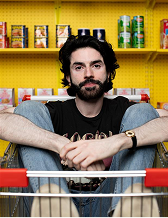

Forbes 30 under 30, Adweek Creative 100 and AdAge 40 under 40 are just some of the prestigious lists that Mo Said has been featured in – and for good reason. Founder of Mojo Supermarket, he’s an award-winning creative entrepreneur that isn’t afraid to break some rules.

MOI: Tell us about Mojo Supermarket and what excites you about your work.
Mo: Mojo Supermarket is a creative agency that usually works with Fortune 500 companies to make the most interesting brands. And to do that, we have to make something that somebody is interested in. And that's what excites me about my work - working with a group of ultra-creative, smart, fast-thinking individuals to make something that somebody will find interesting.
MOI: What’s your secret to getting attention and turning heads?
Mo: I always give the example of two guys at a bar. One guy has a group of people listening to him because he is buying them drinks, and the other guy has a group of people listening to him because he's just interesting. Which group of people is bigger? Which group of people is better?
I think in 2025, more so than ever before, you get attention because you have something interesting to say, to show, to tell. So we just focus on really zeroing in— “Who are we trying to get interested in this brand or product?” And what do they find interesting? So if the idea we’ve come up with isn’t interesting enough to catch people’s attention or to make them share it with other people, then we move onto the next idea. It’s simple.

MOI: What's one of your favorite projects you've worked on?
Mo: I think one of my favorite projects that I've ever done has to be Depression Stick by The Truth Initiative. They came to us at a time when young people didn't think vapes were that bad. The messaging of “these things give you cancer” or “they cause physical harm” wasn't effective because it was a message built for cigarettes and a different generation. We needed a new reason for a new generation to quit a new habit, and we needed to deliver it in a shocking and quick way.
We decided that this generation cared about mental health more than anything else. And we found the link between mental health and nicotine vapes. To deliver that message, we started a fake vape company called Depression Stick and made campaigns as Depression Stick. It was strategically smart and creatively irresponsible, which is how I like my favorite projects.
Read here

Forbes 30 under 30, Adweek Creative 100 and AdAge 40 under 40 are just some of the prestigious lists that Mo Said has been featured in – and for good reason. Founder of Mojo Supermarket, he’s an award-winning creative entrepreneur that isn’t afraid to break some rules.

MOI: Tell us about Mojo Supermarket and what excites you about your work.
Mo: Mojo Supermarket is a creative agency that usually works with Fortune 500 companies to make the most interesting brands. And to do that, we have to make something that somebody is interested in. And that's what excites me about my work - working with a group of ultra-creative, smart, fast-thinking individuals to make something that somebody will find interesting.
MOI: What’s your secret to getting attention and turning heads?
Mo: I always give the example of two guys at a bar. One guy has a group of people listening to him because he is buying them drinks, and the other guy has a group of people listening to him because he's just interesting. Which group of people is bigger? Which group of people is better?
I think in 2025, more so than ever before, you get attention because you have something interesting to say, to show, to tell. So we just focus on really zeroing in— “Who are we trying to get interested in this brand or product?” And what do they find interesting? So if the idea we’ve come up with isn’t interesting enough to catch people’s attention or to make them share it with other people, then we move onto the next idea. It’s simple.
MOI: What's one of your favorite projects you've worked on?
Mo: I think one of my favorite projects that I've ever done has to be Depression Stick by The Truth Initiative. They came to us at a time when young people didn't think vapes were that bad. The messaging of “these things give you cancer” or “they cause physical harm” wasn't effective because it was a message built for cigarettes and a different generation. We needed a new reason for a new generation to quit a new habit, and we needed to deliver it in a shocking and quick way.
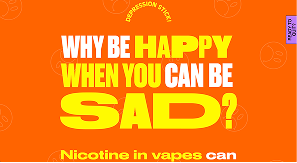
We decided that this generation cared about mental health more than anything else. And we found the link between mental health and nicotine vapes. To deliver that message, we started a fake vape company called Depression Stick and made campaigns as Depression Stick. It was strategically smart and creatively irresponsible, which is how I like my favorite projects.
Read here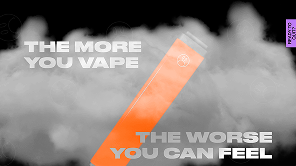
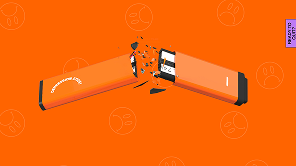
MOI: What recent campaign has caught your attention?
Mo: I promise this isn't a cop-out. But honestly, I'm having trouble trying to remember an example to put here.
But we did this research—every week, even though you're hit by so many messages, you only remember about one and a half brands, and you remember that one and a half brand because they did something interesting. And I think if you look at that average, maybe nothing from last week was interesting enough that I remember it. I know overall a bunch of people have been doing interesting things that I really like, but I can't think of a specific one now, which I think is an interesting answer in itself. From all the advertising I look at consciously and subconsciously, why can't I produce an answer within a minute?

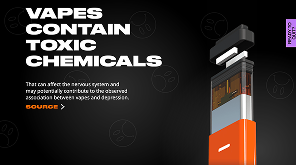
MOI: How would you bring a brand to life in an authentic and meaningful way?
Mo: I don't know. You're going to have to tell me what brand it is and give me a lot of money first.
MOI: How do you see AI changing the future of creative?
Mo: I think AI is here to enlighten creatives. I know that's a crazy answer, and it's very hard to believe right now, but a creative person can think laterally and has impeccable taste. These people with taste will be able to apply that taste to a bunch of options a lot faster with a lot less administrative and annoying work. This will make it so anybody can become a Creative Director immediately. It will also make it so that the best creatives, the best Creative Directors, will not lose their jobs but actually end up being way overpaid compared to today.
But I want to address the fact that right now, it feels like panic. Every day there's a new image generator or copywriting tool that comes out on the internet, causing anxiety within today's creatives. And we're not doing enough to support them emotionally or mentally through this time. We're just telling them to be curious and do more with less.
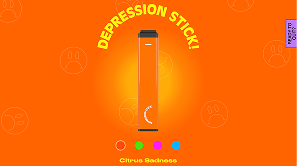


MOI: What recent campaign has caught your attention?
Mo: I promise this isn't a cop-out. But honestly, I'm having trouble trying to remember an example to put here.
But we did this research—every week, even though you're hit by so many messages, you only remember about one and a half brands, and you remember that one and a half brand because they did something interesting. And I think if you look at that average, maybe nothing from last week was interesting enough that I remember it. I know overall a bunch of people have been doing interesting things that I really like, but I can't think of a specific one now, which I think is an interesting answer in itself. From all the advertising I look at consciously and subconsciously, why can't I produce an answer within a minute?
MOI: How would you bring a brand to life in an authentic and meaningful way?
Mo: I don't know. You're going to have to tell me what brand it is and give me a lot of money first.
MOI: How do you see AI changing the future of creative?
Mo: I think AI is here to enlighten creatives. I know that's a crazy answer, and it's very hard to believe right now, but a creative person can think laterally and has impeccable taste. These people with taste will be able to apply that taste to a bunch of options a lot faster with a lot less administrative and annoying work. This will make it so anybody can become a Creative Director immediately. It will also make it so that the best creatives, the best Creative Directors, will not lose their jobs but actually end up being way overpaid compared to today.
But I want to address the fact that right now, it feels like panic. Every day there's a new image generator or copywriting tool that comes out on the internet, causing anxiety within today's creatives. And we're not doing enough to support them emotionally or mentally through this time. We're just telling them to be curious and do more with less.





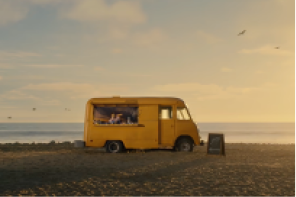

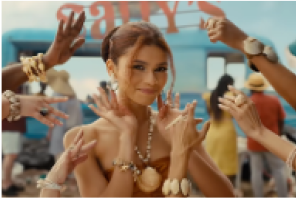
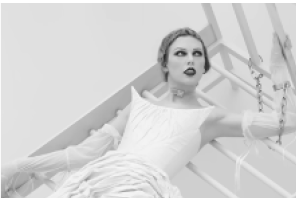
Video commercials, music videos, live performances and interior design – Ethan Tobman is an expert in immersive experiences. He's worked with major brands like Givenchy, Squarespace, Nike and Samsung, and even directed Taylor Swift's record-breaking Eras Tour. His secret? Uniquely emotive storytelling.
Image and article © Ethan Tobman
Read here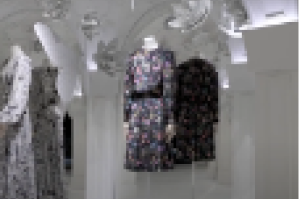
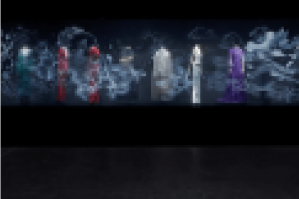
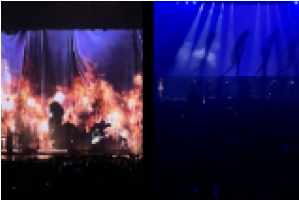

Polina Zakharova and Sveta Yermolayeva are the driving forces behind Hard Feelings Studio. They are powerhouses in music stage design experiences and creative video work, orchestrating the likes of Olivia Rodrigo's Guts World Tour as well as Gucci's Cosmos exhibitions. All their work centers on one main goal: "To make you feel. Hard."
Image and article © Hard Feelings Studio, Polina Zakharova and Sveta Yermolayeva
Read here



Video commercials, music videos, live performances and interior design – Ethan Tobman is an expert in immersive experiences. He's worked with major brands like Givenchy, Squarespace, Nike and Samsung, and even directed Taylor Swift's record-breaking Eras Tour. His secret? Uniquely emotive storytelling.
Image and article © Ethan Tobman



Polina Zakharova and Sveta Yermolayeva are the driving forces behind Hard Feelings Studio. They are powerhouses in music stage design experiences and creative video work, orchestrating the likes of Olivia Rodrigo's Guts World Tour as well as Gucci's Cosmos exhibitions. All their work centers on one main goal: "To make you feel. Hard."
Image and article © Hard Feelings Studio, Polina Zakharova and Sveta Yermolayeva


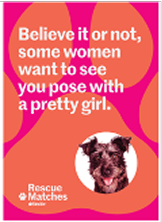
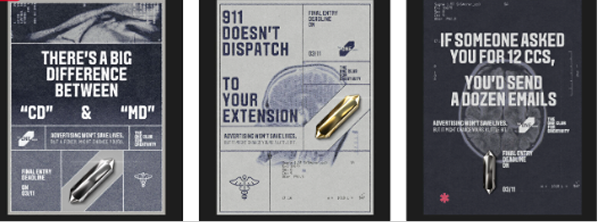
Vanessa de Beaumont is a copywriter and creative director who knows how to have fun with words. With a witty twist to the expected, she's blended dog rescues with dating apps and advertising with medical dramas – proving what's possible when you're prepared to inject a bit of fun and humor into every project.
Image and article © Vanessa de Beaumont
Read hereJohannes Leonardo is an independent creative agency that knows exactly how to immerse and involve their client’s audiences. Just take their 'Life Half Full' VW campaign, which blends vintage aesthetics with interesting framing to stir a feeling of nostalgic familiarity for the new electric camper.
Image and article © Johannes Leonardo
Watch here

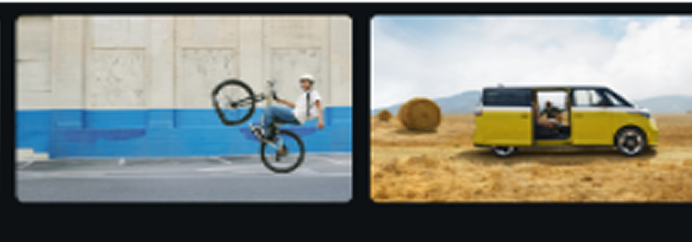
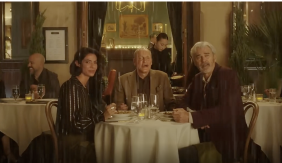
Where's Wally? Nope, it's Ugo Gattoni – the fantastical, surrealist illustrator who's worked with everyone from Cartier to Hermes, and was even the brains behind the Paris Olympics posters. A real world-builder, his artistic style bursts with detail and immerses viewers into a whole new dreamscape.
Image and article © Ugo Gattoni
Read here

Vanessa de Beaumont is a copywriter and creative director who knows how to have fun with words. With a witty twist to the expected, she's blended dog rescues with dating apps and advertising with medical dramas – proving what's possible when you're prepared to inject a bit of fun and humor into every project.
Image and article © Vanessa de Beaumont


Johannes Leonardo is an independent creative agency that knows exactly how to immerse and involve their client’s audiences. Just take their 'Life Half Full' VW campaign, which blends vintage aesthetics with interesting framing to stir a feeling of nostalgic familiarity for the new electric camper.
Image and article © Johannes Leonardo


Where's Wally? Nope, it's Ugo Gattoni – the fantastical, surrealist illustrator who's worked with everyone from Cartier to Hermes, and was even the brains behind the Paris Olympics posters. A real world-builder, his artistic style bursts with detail and immerses viewers into a whole new dreamscape.
Image and article © Ugo Gattoni

Turning Heads™
The way to get
to a better ‘what’.
(What?)
We think that the B2B marketing and sales experiences that turn more heads are the ones that are “… not so B2B”.
If you want to get to these it helps to have a way to think and do things differently. We call this Turning Heads™.
It’s our own methodology and approach to problem solving which helps us to think beyond the ‘what’ and the ‘how’. Turning Heads enables us to get the right mix of experts together with their heads turned towards any challenge. And when we do this we’re able to develop really intelligent solutions that result in better business outcomes… and turn heads.
(What?)
In an industry fixated on the obvious, true creative breakthroughs often come from those with the confidence to look in the opposite direction. Two individuals exemplify this approach:
Sarah Feeney, founder of Ideas Make Manifestos Studio, has built a reputation through brands like Sailor Jerry Rum, Puma, and Vice. Yet her personal project "My Empire of Dirt" stands out. This digital archive captures British subculture through ephemera from 1985 to 2011. Sarah modestly describes it as exploring "emotional ties to scraps of paper, old cassette tapes, tickets, and posters," but it profoundly illustrates how cultural fragments inspire genuine creative insight.
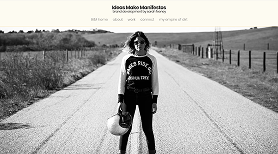
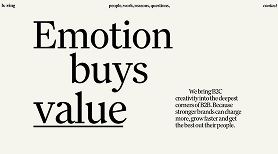
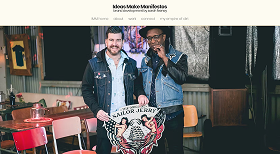
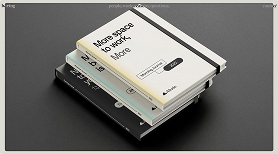
Her work reminds us that creativity isn't abstract but rooted in experience. Amid agencies automating processes, Sarah demonstrates authentic creativity is human, shaped by lived context.
Equally fascinating is Tash Peskin, whose career spans Frukt, Karmarama, Mother, BBH, Universal Music Group, and Soho House Group. Instead of following a predictable path, she founded BORING—a B2B branding agency focused on industries dismissed as "dull."
BORING's positioning reframes perceptions: "To big agencies, you are the boring client. To BORING, you are our best client." This transforms a perceived negative into a distinctive value proposition.
Tash’s approach aligns with our 'not-so-B2B' philosophy but ventures boldly by embracing overlooked businesses: "Boring is valuable. Boring holds society together."
Feeney and Peskin show that looking where others aren't yields valuable insights. They remind us that while the industry obsesses over technique and technology, independent thought remains its most valuable currency—proving the most insightful perspectives emerge from turning in the opposite direction.

In an industry fixated on the obvious, true creative breakthroughs often come from those with the confidence to look in the opposite direction. Two individuals exemplify this approach:

Sarah Feeney, founder of Ideas Make Manifestos Studio, has built a reputation through brands like Sailor Jerry Rum, Puma, and Vice. Yet her personal project "My Empire of Dirt" stands out. This digital archive captures British subculture through ephemera from 1985 to 2011. Sarah modestly describes it as exploring "emotional ties to scraps of paper, old cassette tapes, tickets, and posters," but it profoundly illustrates how cultural fragments inspire genuine creative insight.

Her work reminds us that creativity isn't abstract but rooted in experience. Amid agencies automating processes, Sarah demonstrates authentic creativity is human, shaped by lived context.
Equally fascinating is Tash Peskin, whose career spans Frukt, Karmarama, Mother, BBH, Universal Music Group, and Soho House Group. Instead of following a predictable path, she founded BORING—a B2B branding agency focused on industries dismissed as "dull."

BORING's positioning reframes perceptions: "To big agencies, you are the boring client. To BORING, you are our best client." This transforms a perceived negative into a distinctive value proposition.

Tash’s approach aligns with our 'not-so-B2B' philosophy but ventures boldly by embracing overlooked businesses: "Boring is valuable. Boring holds society together."
Feeney and Peskin show that looking where others aren't yields valuable insights. They remind us that while the industry obsesses over technique and technology, independent thought remains its most valuable currency—proving the most insightful perspectives emerge from turning in the opposite direction.

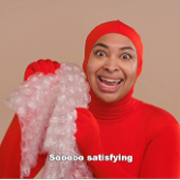
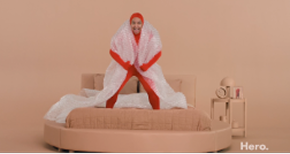
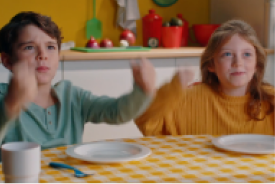
"Tell them what you did. You got them to eat vegetables! Childhood trauma!". Sounds slightly bonkers? That's because it is. This hard rock anthem for Wholly Veggies is just one example of the unapologetically bold and humorous work of Matt Heath's Party Land. See also the tongue-in-cheek Every Man Jack ad, featuring hornets and near death...
Image and article © Party Land, Matt Heath and Haley Hunter
Read hereBethany Maxfield, Creative Director at Humanaut, is the proof we needed that humor makes the world a better place. From pimple patching to 'Poopowerment', she's worked on a number of award-winning campaigns for brands that are making a difference – and humor is her secret weapon.
Image and article © Humanaut
Read here




"Tell them what you did. You got them to eat vegetables! Childhood trauma!". Sounds slightly bonkers? That's because it is. This hard rock anthem for Wholly Veggies is just one example of the unapologetically bold and humorous work of Matt Heath's Party Land. See also the tongue-in-cheek Every Man Jack ad, featuring hornets and near death...
Image and article © Party Land, Matt Heath and Haley Hunter
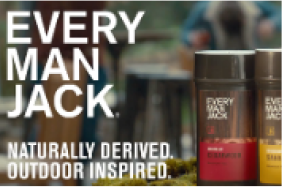
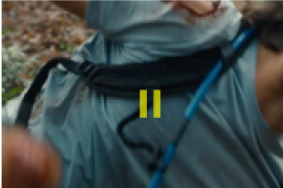


Bethany Maxfield, Creative Director at Humanaut, is the proof we needed that humor makes the world a better place. From pimple patching to 'Poopowerment', she's worked on a number of award-winning campaigns for brands that are making a difference – and humor is her secret weapon.
Image and article © Humanaut


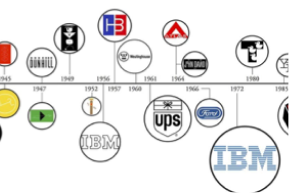

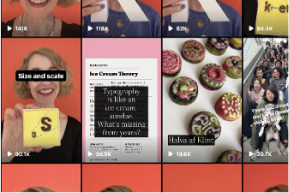
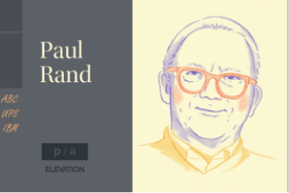
If you removed Paul Rand’s work in brand identity, he’d still have an amazing resume. At the age of 23, Rand served as the art editor of Esquire magazine, and he later taught graphic design at Yale. However, his most enduring impact has to be his logo designs that almost reinvent the word iconic. From ABC to IBM to UPS, his work is still recognizable and influential several decades after their creation.
Image and article © Elevation, Dianne Frisbee
Read here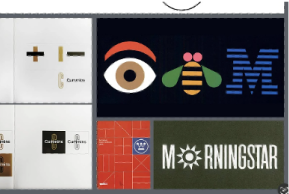
Ellen Lutpon is a writer, educator and a great graphic designer with a keen eye for typography and a vast portfolio of work. She is the author of numerous books on graphic design theory and practice, the curator of contemporary design at Cooper Hewitt, Smithsonian Design Museum in New York City and a professor at the Maryland Institute College of Art.
Image and article © The End, Joana Gala
Read here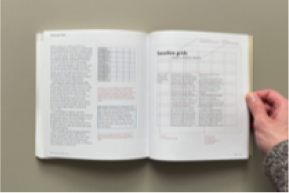
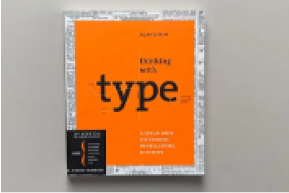
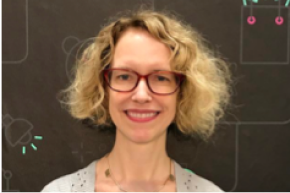


If you removed Paul Rand’s work in brand identity, he’d still have an amazing resume. At the age of 23, Rand served as the art editor of Esquire magazine, and he later taught graphic design at Yale. However, his most enduring impact has to be his logo designs that almost reinvent the word iconic. From ABC to IBM to UPS, his work is still recognizable and influential several decades after their creation.
Image and article © Elevation, Dianne Frisbee




Ellen Lutpon is a writer, educator and a great graphic designer with a keen eye for typography and a vast portfolio of work. She is the author of numerous books on graphic design theory and practice, the curator of contemporary design at Cooper Hewitt, Smithsonian Design Museum in New York City and a professor at the Maryland Institute College of Art.
Image and article © The End, Joana Gala


When presented with something sad or uncomfortable, what do most people do? They look away. It's only natural. We don't like to sit with discomfort. But when you turn it into something beautiful, the reaction shifts.
That's what these two examples from the medical field have achieved. Two serious, life-altering problems that would make most people turn away, are instead turned into something... almost mesmerising.

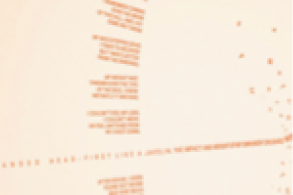
Creating art with words, this campaign for Back Up Trust draws you into the stories of people's paralysis. The visual interest forces you to stop and linger to read what it's all about.
Image and article © Creativepool, RAPP UK
Read here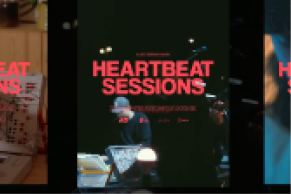
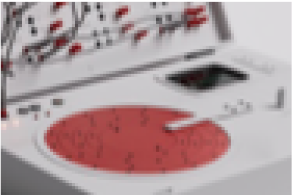

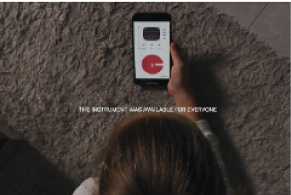
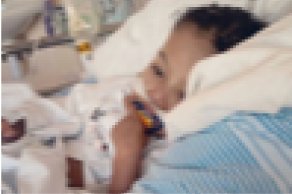
This campaign for The Swedish Heartchild Foundation turned congenital heart disease into a drum machine which you could create music with. Slightly arrhythmic music. It encouraged the public and musical artists to engage and create – and raised huge awareness.
Image and article © D&AD
Read here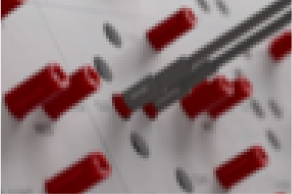



When presented with something sad or uncomfortable, what do most people do? They look away. It's only natural. We don't like to sit with discomfort. But when you turn it into something beautiful, the reaction shifts.
That's what these two examples from the medical field have achieved. Two serious, life-altering problems that would make most people turn away, are instead turned into something... almost mesmerising.
Creating art with words, this campaign for Back Up Trust draws you into the stories of people's paralysis. The visual interest forces you to stop and linger to read what it's all about.
Image and article © Creativepool, RAPP UK


This campaign for The Swedish Heartchild Foundation turned congenital heart disease into a drum machine which you could create music with. Slightly arrhythmic music. It encouraged the public and musical artists to engage and create – and raised huge awareness.
Image and article © D&AD


Need inspiration for your next campaign, or want to chat with our global Creative
Team?
creative@moi-global.com
Get those creative juice flowing with head-turning
examples of creativity, straight to your inbox.